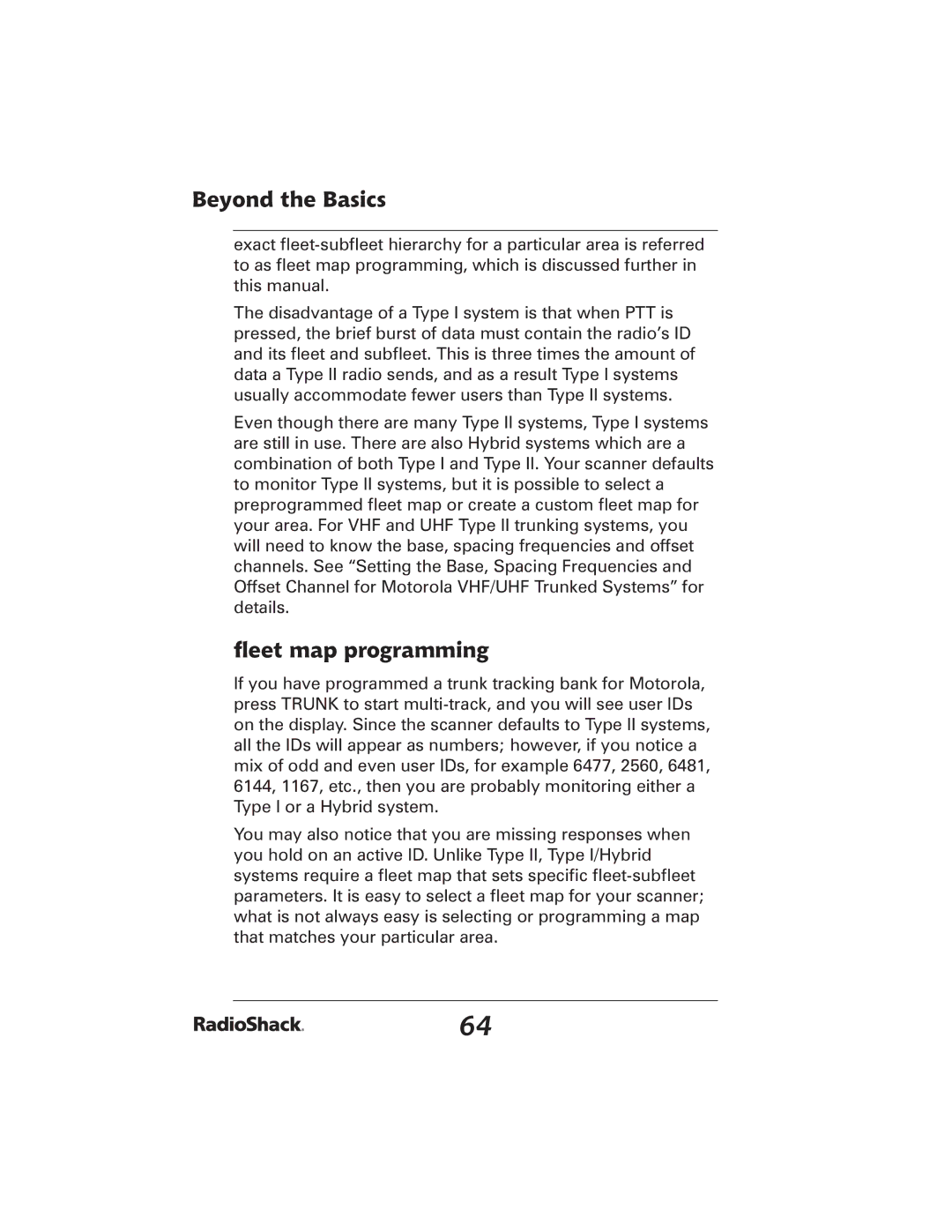
Beyond the Basics
exact
The disadvantage of a Type I system is that when PTT is pressed, the brief burst of data must contain the radio’s ID and its fleet and subfleet. This is three times the amount of data a Type II radio sends, and as a result Type I systems usually accommodate fewer users than Type II systems.
Even though there are many Type II systems, Type I systems are still in use. There are also Hybrid systems which are a combination of both Type I and Type II. Your scanner defaults to monitor Type II systems, but it is possible to select a preprogrammed fleet map or create a custom fleet map for your area. For VHF and UHF Type II trunking systems, you will need to know the base, spacing frequencies and offset channels. See “Setting the Base, Spacing Frequencies and Offset Channel for Motorola VHF/UHF Trunked Systems” for details.
fleet map programming
If you have programmed a trunk tracking bank for Motorola, press TRUNK to start
You may also notice that you are missing responses when you hold on an active ID. Unlike Type II, Type I/Hybrid systems require a fleet map that sets specific
64
